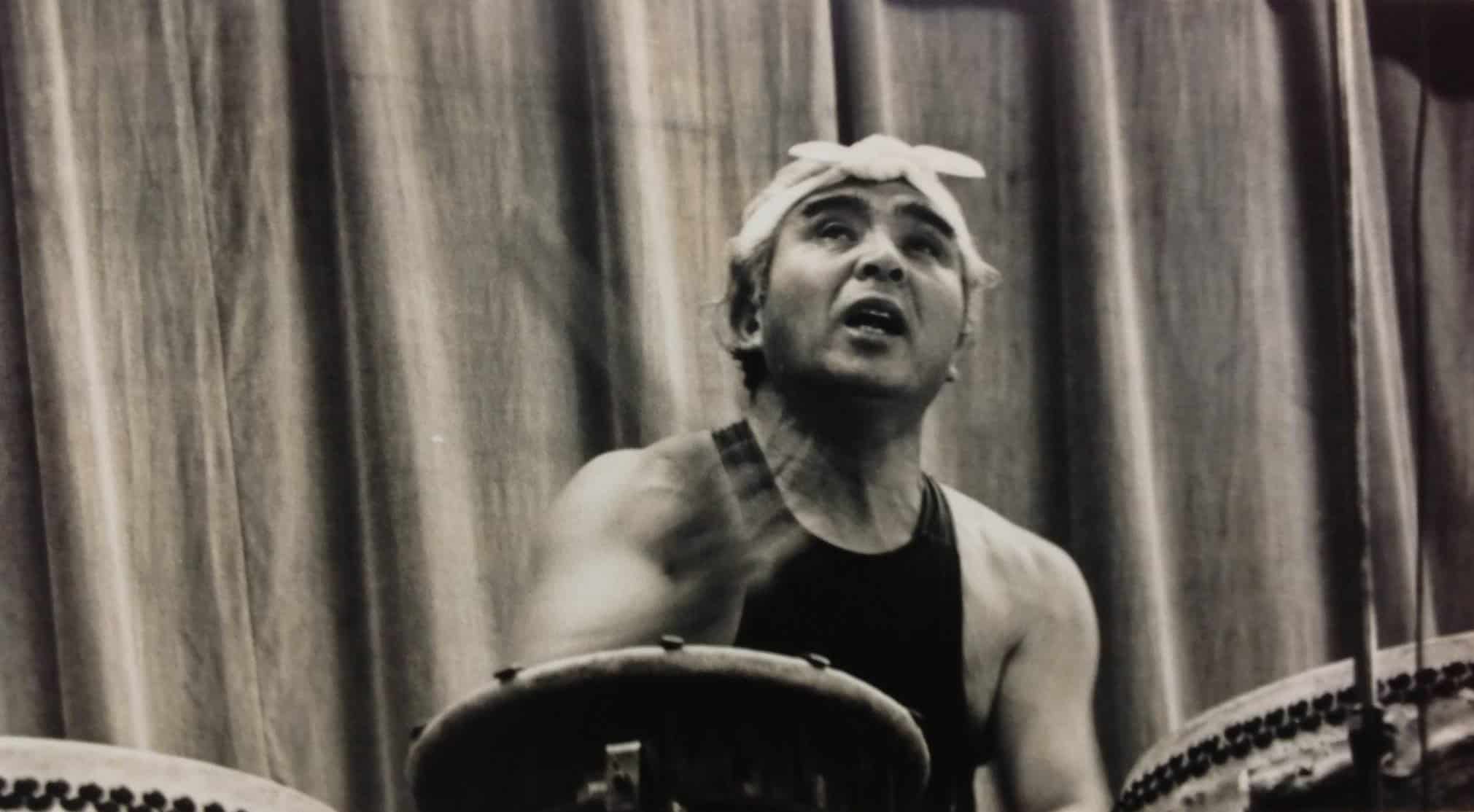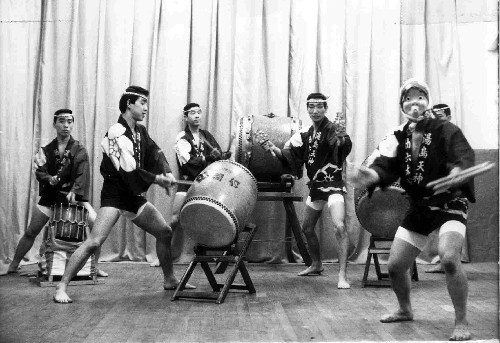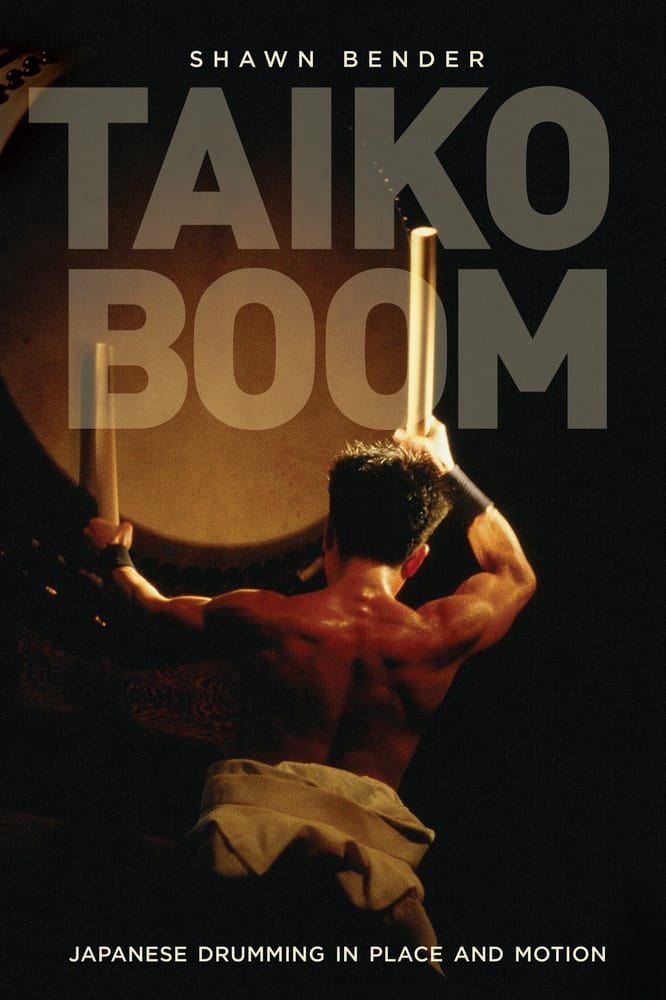600AD – Earliest Forms of Taiko
This article will try to provide a very brief summary of taiko history.
It’s likely that percussion instruments existed in Japan over 2000 years ago during the Jomon and Yayoi eras. However, these instruments were unlike the taiko we know today. The taiko drums we are familiar with today, probably arrived in Japan prior to 600AD by way of the Silk Road, travelling through India, China, and Korea.
Gagaku, the music of the imperial court, is the earliest form of documented Japanese music. In 701AD the imperial authorities established the Imperial Music Bureau to oversee court music. The drums used in Gagaku are one of the ancestors of the taiko we play today.

Clay haniwa figure of a person playing a drum
1200AD – Changes in Japanese Society
.jpg)
Noh theatre performance
Around 1200AD, the power structure in Japanese society shifts from royalty to the samurai. This shift in society also transitions music from the imperial courts to the samurai, and eventually to the common people.
During this time, Noh and Kyogen theatre, which were exclusive to the samurai, began to utilize taiko. The theatre forms of Kabuki and Bunraku, which developed later on for common people, also use taiko.
Alongside theatre, taiko also developed as a folkloric art, accompanying festivals and religious ceremonies. One example is the Obon Festival, or Bon Odori. We can trace the roots of the Obon Festival back 500 years to a ritual where people would gather during the mid-August Obon Season to hold a memorial service for the family of a person who passed away earlier in the year.
The Contemporary Taiko Ensemble
1950s and Beyond – Modern forms of Taiko

Daihachi Oguchi created the contemporary taiko ensemble.
Taiko in a traditional context, be it Gagaku, theatre, or folkloric arts, taiko are a part of a larger whole. In Gagaku, the drums are a part of a larger ensemble. And in theatre, the taiko accompany the theatre performance, and in the folkloric arts, the taiko accompany a religious ceremony or ritual.
In a contemporary context, the performers play the drums as a standalone art form.
Taiko as a contemporary art form, known as Kumi Daiko, was born in the early 1950s. Mr. Daihachi Oguchi of Osuwa Daiko utilized taiko drums of various pitches. This resulted in the taiko ensemble performance style we recognize today as Kumi Daiko.

Sukeroku Daiko combined various folkloric taiko styles.
Taiko in a traditional context, be it Gagaku, theatre, or folkloric arts, taiko are a part of a larger whole. In Gagaku, the drums are a part of a larger ensemble. And in theatre, the taiko accompany the theatre performance, and in the folkloric arts, the taiko accompany a religious ceremony or ritual.
In the 1960s another influential group called Sukeroku Daiko was formed in Tokyo. Sukeroku Daiko combined elements of Bon Daiko – Obon Festival drumming, with elements of Hogaku Bayashi (theatre music) and Edo Bayashi (festival music of Tokyo).

Ondekoza was the world’s first taiko group to tour internationally.
In the 1970s, a group called Ondekoza was formed on Sado Island. Currently the group is based in Shizuoka Prefecture, at the foot of Mt. Fuji. In 1981, members of Ondekoza split and formed Kodo, which is currently based on Sado Island. Ondekoza and Kodo are extremely influential for their repertoire, development of instruments, and also for being one of the main proponents that brought taiko to a global stage.
Taiko History Outside Japan

Mr. Seiichi Tanaka founded the first taiko group in the US called San Francisco Taiko Dojo in 1968. In 1969, members of Senshin Buddhist Temple formed Kinnara Taiko in Los Angeles, and in 1973, San Jose Taiko formed in San Jose Japantown. Soh Daiko, formed in 1979, is the first taiko group on the East Coast.
Big Drum: Taiko in the United States is a great video doumenting the development of American taiko.
In Brazil, the introduction of taiko dates back to the 1970s and 1980s in Sao Paulo. Taiko in Brazil gained popularity in the early 2000s through the work of the Japan International Cooperation Agency and Nippon Taiko Foundation.
Taikoz has been performing in Australia since 1997 and is one of the most compelling taiko groups today.
In 2016, the first European Taiko Conference was hosted in the UK, and brought together taiko enthusiasts from Austria, Belgium, France, Germany, Hungary, Italy, Spain, Sweden, Switzerland, and the UK.
Today, there’s at least 500 taiko groups in the US and Canada, 150 taiko groups in Brazil, and taiko is gaining popularity in Europe.
Taiko groups outside of Japan have played a key role in promoting taiko internationally. Today it is common to hear taiko drums in film, video games, and other media.
Learn More about Taiko History
If you want to learn more about the history of taiko in English, I recommend checking out a website called Taiko Source, as well as these two books – Taiko Boom by Shawn Bender, and The Way of Taiko by Heidi Varian.
An excellent online summary can be found on the Taiko Center website.

“Taiko Boom” by Shawn Bender
Please reach out if you would like to talk taiko!
